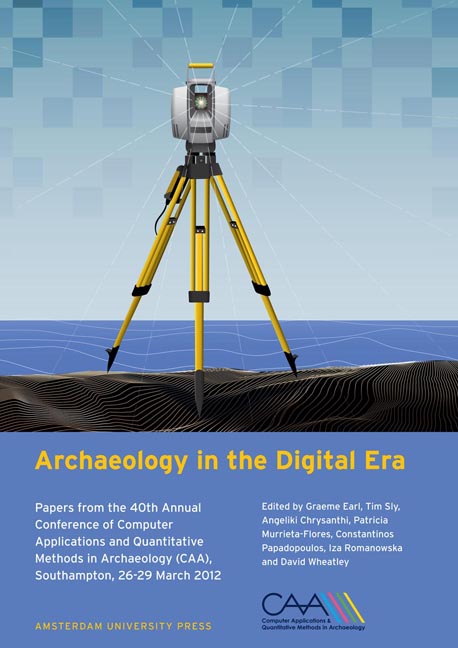 Archaeology in the Digital Era
Archaeology in the Digital Era Evaluating Virtual Museums: Archeovirtual Case Study
Published online by Cambridge University Press: 16 February 2021
Summary
Abstract:
November 2011 saw the opening of the exhibition “Archeovirtual” organized by CNR ITABC and V-MusT Network of Excellence, in Paestum, Italy, under the general direction of BMTA (BMTA is the Mediterranean Expo on Archaeological Tourism directed by Ugo Picarelli and organised by Salerno Province). The event, part of a wider European project on virtual museums, was a rare opportunity to show many different projects about Virtual Reality and Cultural Heritage. During the show, four types of evaluation tools were employed to examine user behaviour and usability of the interfaces, plus understanding the gap between user expectation and experience. First analyses revealed that the impact of interactive applications on the user seems to depend on the capability of technology to be “invisible” and to allow a range of possibilities for accessing content. To achieve this, virtual museums need a more integrated approach between cultural contents, interfaces and social and behavioural studies.
Keywords:
Virtual Museum, Evaluation Methods, Social and Behavioural Interaction
Introduction
Evaluation activities are highly useful since they can improve and enhance the research domain. This is true also of the newly born field of Virtual Museums. Developing a good framework for analysis and evaluation can have a significant impact on the production phases of a virtual museum so that certain outcomes, such as knowledge exchange, cognitive improvement, and cultural heritage communication can be better achieved. Up to now, the field has produced insufficient extensive studies on the effectiveness of such virtual applications analysed on the basis of cross-comparative methods of evaluation; nothing really explicative has been done that has taken into account all of the complex variables that are inherent in a VM project. We still have to rely only upon visitors’ surveys and researches focused on web sites or user interface design analysis are provided by laboratories and cultural institutions. Consequently, it is very difficult for us to build up a reliable and effective grid of indicators that would be helpful for analysing, studying and communicating with specialists and academics, thus, limiting the potential for a real improvement of the research. Therefore, our main goal is to study the criteria and parameters that could be used as reference for generally evaluating virtual museums, considering what kind of method, if one exists, we should adopt.
- Type
- Chapter
- Information
- Archaeology in the Digital EraPapers from the 40th Annual Conference of Computer Applications and Quantitative Methods in Archaeology (CAA), Southampton, 26-29 March 2012, pp. 74 - 82Publisher: Amsterdam University PressPrint publication year: 2014


